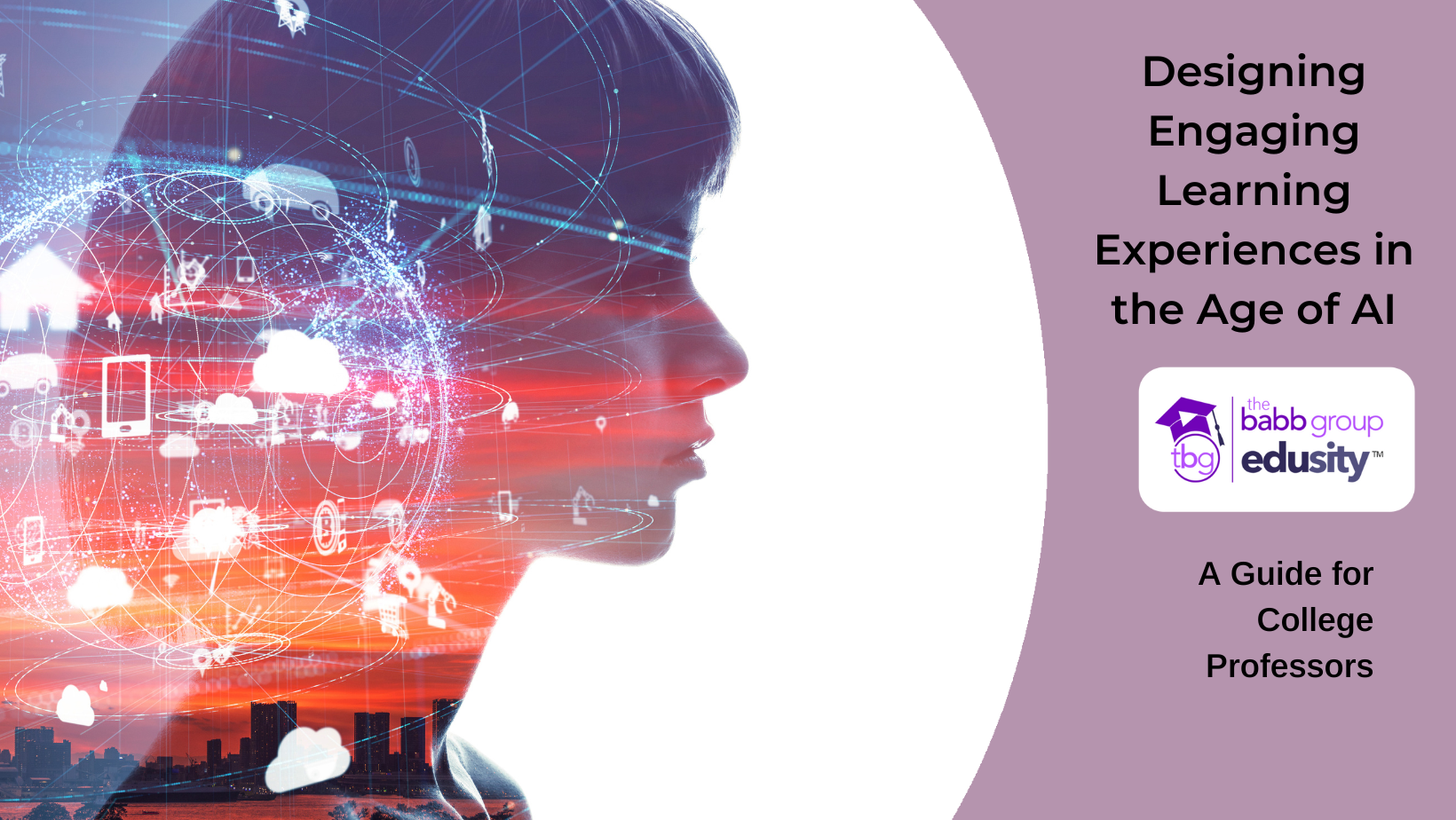
Trying to figure out how to use it to make your work more efficient?
Thinking up new assignments so students still have to use critical thinking and creativity and encourage independent work?
You might also like Active Learning: What Students Want.
Embrace AI-Assisted Content Creation
It can take a lot of work to accept, learn, and be comfortable with new technology. Even course content creators can feel like they’re getting away with something cheeky by using AI as a starting point for content. AI tools can help professors streamline the process of content creation, saving valuable time and effort. There are a few ways to incorporate AI into your course creation.
Presentation tools: Canva and PowerPoint offer AI assistance with creating presentations. Both tools suggest layouts, designs, images, and animations. Instead of viewing these tools as cheating, experiment using them for your class presentations. Based on your experiences, give students assignments to use the tools to create presentations and collaborate in groups. Students can analyze the results and determine if they accept or reject the suggestions. They can apply critical thinking by answering questions about what they would do differently and what changes they made to the AI suggestions.
Personalize Learning with Adaptive Learning Systems
While it seems like AI is new with the onset of tools like ChatGPT, learning management systems have been using it for years. AI-driven adaptive learning systems can analyze student data and provide personalized recommendations tailored to each learner’s needs. K-12 tools such as Study Island and SplashMath analyze a student’s answers in real-time and suggest the following question based on performance, leveling up or down depending on student needs. Professors can leverage their LMS similarly to deliver customized content, assignments, and assessments based on individual strengths, weaknesses, and learning preferences. This personalized approach encourages active engagement and ensures students receive targeted support throughout the course.
Design Assignments that Foster Critical Thinking and Experiential Learning
Students report wanting more active learning. Consider assignments that are appropriate for your field that incorporate work that gets students active. Some examples include:
- Create a video response to a discussion post where students focus on their personal and work experiences with the topic.
- Create original media using interviews
- Video presentation of a group project
- A live debate: it can be done using videos or an online chat tool
- Demonstrate a role-play activity in pairs or small groups
- Record an original podcast, expressing their opinion informed by research
- Create a diagram using paper, markers, paint, and other hands-on tools
- Conduct a lab
- A self-reflection and integration assignment where students indicate what they learned about a topic and how they plan to incorporate it into their current role
Design AI-Integrated Assignments
To ensure students continue developing critical thinking skills, professors can design assignments incorporating AI technologies without sacrificing analytical reasoning. Here are a few ideas:
AI Ethics Analysis: Ask students to critically examine the ethical implications of AI applications in different industries or use cases. Encourage them to consider AI systems’ potential biases, privacy concerns, and social impact.
AI Decision-Making: Present students with real-world scenarios and challenge them to propose AI-based solutions. Emphasize the importance of evaluating the strengths, limitations, and potential consequences of AI algorithms and decision-making processes.
AI Algorithm Evaluation: Task students with evaluating and comparing different AI algorithms or models. Encourage them to critically analyze these algorithms’ accuracy, fairness, interpretability, and potential biases.
Encourage Experimentation with AI Tools
To foster innovation and creativity, encourage students to explore and experiment with AI tools relevant to the subject matter. For example, students could develop their AI models in a computer science course or participate in coding competitions incorporating machine learning techniques. This hands-on approach enables students to apply critical thinking skills while gaining practical experience with AI technologies.
AI is another tool in educators’ toolboxes to design learning experiences that captivate students’ interest and promote critical thinking. By embracing AI-assisted content creation, personalized learning systems, collaborative tools, and thought-provoking assignments, educators can leverage the power of AI to enhance online courses in higher education. Striking the right balance between technological advancements and critical thinking fosters a future-ready generation of students prepared to navigate an AI-driven world.
Angela Britcher
Latest posts by Angela Britcher (see all)
- Enhancing First-Year Experiences in Higher Education - August 1, 2024
- Enhancing Education with Virtual Reality: A Hands-On Approach - June 27, 2024
- Higher Education Trends: Insights from Our COO, Sheila Fry - June 13, 2024
